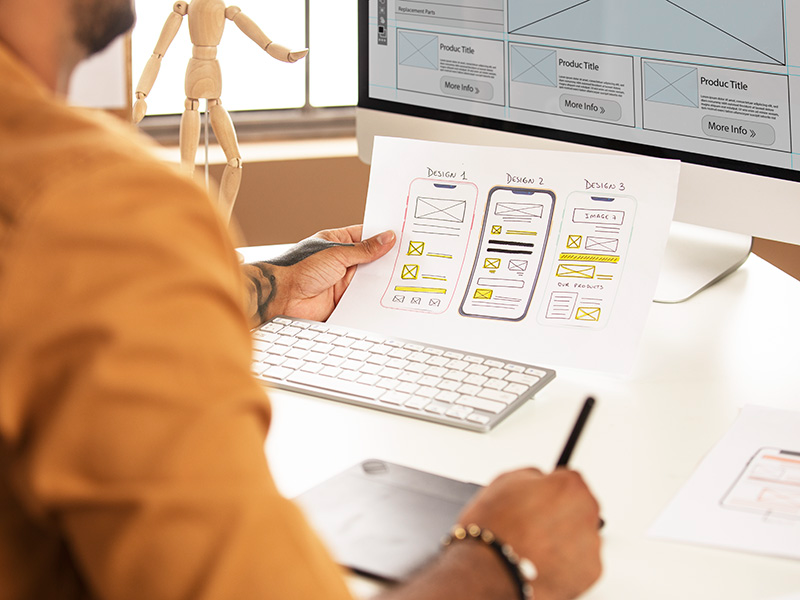Overcoming Challenges in Flutter Test Automation with Katalon Studio
While Flutter is a popular framework for mobile application development, it may present some challenges for test automation. Especially when trying to automate tests using Flutter element IDs without using XPath, some obstacles may arise.
-
Preprocessing Requirement: Flutter applications require preprocessing to interact seamlessly with test automation tools like Appium. Without this, the automation capabilities may be limited depending on the UI elements of the application.
-
Unique UI Object Behavior: Flutter applications may not behave like traditional applications built with Swift or Kotlin. The effectiveness of test automation depends on the app's unique UI structure.
-
Dynamic Nature of Elements: Flutter elements are dynamically created based on the widget tree hierarchy. This means that the IDs of elements can change each time the application is run, making it difficult to use static identifiers like XPath to find elements and automate tests.
-
Concurrency Issues with Widget Tests: Widget tests are used to verify the state of the UI. However, in Flutter, the UI is constantly updated, which can lead to concurrency issues with widget tests. If tests are run without waiting for the UI to update, they may produce incorrect results.
-
Complex Widget Hierarchy: Flutter widgets can create complex hierarchies, requiring test authors to deeply understand the widget hierarchy and relationships between elements to properly execute their tests.
-
Platform Differences: Flutter applications can run on iOS and Android platforms, requiring tests to be separately executed on each platform. UI differences between platforms can make it challenging to customize tests for each platform.
Suggestions to Overcome Challenges:
● Flutter Driver: Flutter Driver is an official tool for writing automation tests for Flutter applications. It uses widget IDs to find elements and helps address concurrency issues.
● Test Widgets: Test widgets can be used to isolate widgets in the test environment and make tests easier to write.
● Mocking: Mocking can be used to mimic the behavior of real objects in the test environment, leading to faster and more reliable test execution.
● CI/CD Integration: Continuous Integration and Continuous Delivery (CI/CD) integration ensures that tests are automatically run with each code change, increasing test coverage and reliability.
How to Overcome Flutter Test Automation Challenges with Katalon Studio?
Katalon Studio can help overcome some of the challenges when conducting test automation for mobile applications developed with Flutter. Here are the challenges or limitations that can be addressed with Katalon Studio:
-
Preparing Your Flutter Application for Testing: Preprocessing is an important step in preparing your Flutter application to interact smoothly with automation tools. For more detailed information on how to preprocess a Flutter application for testing purposes with Katalon, you can refer to BrowserStack's instructions on how to preprocess a Flutter application for testing purposes in collaboration with Katalon.
-
Dynamic Nature of Elements: Katalon Studio offers various methods for finding elements in addition to XPath. These methods include widget IDs, widget names, and accessibility labels. Widget IDs are an ideal method for dynamically finding elements and can be automatically detected by Katalon Studio.
-
Concurrency Issues with Widget Tests: Katalon Studio addresses concurrency issues with widget tests by providing tools such as "Wait" commands and "Sync" functions. These tools allow you to wait for the UI to reach a certain state and run your tests at the right time.
-
Complex Widget Hierarchy: Katalon Studio's "Object Spy" tool helps visualize the widget hierarchy and makes it easier to find elements. This tool enables test authors to understand the widget hierarchy and write tests more easily.
-
Platform Differences: Katalon Studio allows you to create and run separate tests for iOS and Android platforms. Additionally, you can write platform-specific test scenarios using "Platform Specific" commands.
Setting Up Test Automation with Katalon Studio
To effectively use Katalon Studio for testing Flutter applications, you can follow these steps:
Install Katalon Studio: Ensure that Katalon Studio is installed on your computer. You can download the latest version from Katalon's official website.
Install Required Mobile Automation Libraries and Drivers: Obtain the necessary software libraries and drivers for mobile application automation. You can start by downloading and installing required libraries like Appium (2.X) and drivers like XCUITest for iOS and UIAutomator2 for Android. You'll also need development environments like Xcode for iOS tests and Android Studio for Android tests. Make sure these tools are properly installed and configured. Once you've completed this process, you'll have the necessary infrastructure for mobile application automation.
Install the Appium Flutter Driver: Installing the Appium Flutter driver involves configuring the required features and defining custom keywords. To learn how to perform this process, including installing the Appium Flutter driver, specifying features, and defining custom keywords, please refer to Katalon's documentation. These resources will guide you through the necessary steps and ensure proper configuration.
Library Management: Obtain the Appium_flutterfinder_java library from the Maven repository and add the downloaded .jar file to Katalon Studio by navigating to Project > Settings > Library Management. These steps allow you to integrate the library into your project.
Keyword Package (Optional): Optionally, you can create a custom keyword package to develop user-friendly interactions by copying and pasting the FlutterFinder definition. This package will assist in creating test command files containing any Flutter-specific locators when applied by your application developers to the application under test. These steps will facilitate easier and more user-friendly interactions with the application under test.

You can also transfer this subfolder (katalon.klc) to your Keywords folder. You can use the link katalon.klc.zip to download the file. While Katalon Studio is effective in Flutter test automation, it should be noted that there are certain limitations. These limitations often stem from constraints within Appium itself, which contributors typically address quickly. Significant limitations are rarely noted in technical discussions. Automating test scenarios for Flutter applications can be a highly beneficial process when done correctly. Leveraging the power of Katalon Studio and Appium can make this process more efficient. Ensuring your Flutter application is ready for comprehensive testing with the preprocessing step is crucial. Creating a custom keyword package can also enhance the development of user-friendly interactions. Flutter is a versatile and dynamic platform for application development, and Katalon complements this platform seamlessly to deliver high-quality, reliable software.
Advantages of Using Katalon Studio with Virgosol:
Virgosol is the sole authorized partner of Katalon in Turkey and has an expert team in Katalon Studio and Flutter test automation. Virgosol's services include:
- Sales and consultancy of Katalon Studio license
- Training and support for test automation with Katalon Studio
- Custom test automation solutions
By working with Virgosol, you can benefit from:
Expert support and consultancy Training and courses Custom solutions
For more information, you can contact [email protected]. Using Katalon Studio with Virgosol can streamline the test automation of your Flutter applications and enable you to deliver high-quality, reliable software.
Author: Fatih M. HARMANCI



